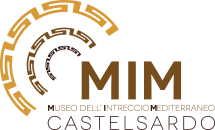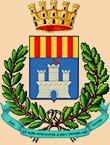Museo dell'intreccio mediterraneo di Castelsardo
Main site sections
Mats, roofs and ropes
Mats and roofs
Among the most skilled artifacts of male construction are those made using canes, a flexible, resistant and light plant material. The harvesting and crafting are done from January to February. After cutting the canes are cleaned, tied into bundles and used for working activities or sold (as cane fencing or roofing material) The canes were held together with a cord of twisted reeds that was fixed to the first cane and joined to the others by twining or knotting.
Important too is the production of roofing mats with a vertical warp and horizontal weft, typical of Campidano di Oristano. These foresaw the use of dry, flattened canes, intertwined to form a rectangle. This roofing material was used exclusively for the master bedroom of the house. Used also to make mezzanine lofts and dividing partitions, silos, cart covers and as bedding. The latter use was invaluable during religious pilgrimages and indispensable for fishermen who spent much time at sea, giving protection from moisture and sea salt.
Ropes
Working ropes were made all over Sardinia. Fibers varied according to the geographic area and usage: leather ropes were used to tame animals in the inland areas; horsehair ropes in agricultural and coastal areas; ropes of plant fibers for agricultural and fishing activities. In Northern Sardinia the dwarf palm was mainly used while on the rest of the Island the use of reeds predominates.


